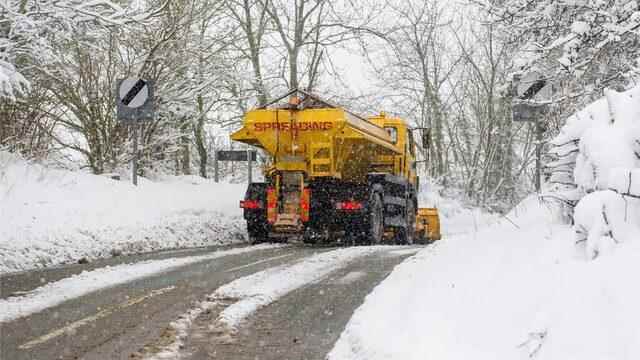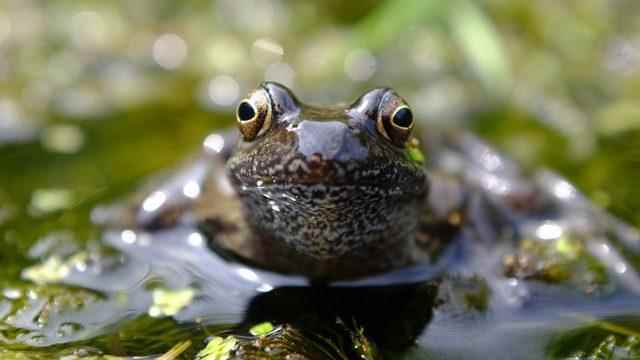A common practice in heavy snowfalls is salting the roads against the danger of icing. But scientists say using rock salt on the roads is harmful to life and best practices need to be disseminated quickly.
There is a lot of research that says salting roads increases the salinity of drinking water.
This increase harms aquatic life, threatening both biodiversity and lakes, streams and other aquatic ecosystems.
Speaking to the BBC previously, Lecturer at Swansea University in Wales, Dr. Dan Forman noted that amphibians living in stagnant waters along roadsides are vulnerable to changes in salinity.
Dr. “Especially in ditches and along roadsides, amphibian populations are declining. These spots can be loaded with so much salt that amphibians cannot spawn here. In that case, they either leave here or die,” Forman said.
Amphibians at risk include frogs, toads and tadpoles. Amphibians maintain the chemical balance of their bodies with their skin.
Any change in the salinity of the water in which they live can have a serious impact on their ability to survive.
Salting has other effects on life as well.
Dr. Forman also said that salt can affect a plant’s ability to photosynthesize (generate energy from light), and that soils near roads are changing their habitat due to increased salinity.
Plants can be affected by dissolved salts in the water. Commonly used deicing salts can dissociate into sodium, calcium, magnesium and chloride ions when dissolved in water. High levels of dissolved sodium and chloride ions in the soil take the place of other mineral nutrients and damage the plants. Chloride accumulation in the leaves can reach harmful levels and cause leaf burn and death.

A paper published in Frontiers in Ecology and the Environment in December research He says the salinity of drinking water has increased ‘hugely’ in cold regions where salting is practiced around the world.
Every year 7 million tons of salt in Canada, 600 thousand tons in China, 320 thousand tons in Norway, 210 thousand tons in Sweden and 55 thousand tons in Denmark are used against icing. is stated.
The increase in the salinity of drinking water can adversely affect human health. It creates a risky situation, especially for people on a low sodium diet.
However, excessive use of salts on the roads can lead to the release of lead from water distribution pipes. Mercury and radon are among the other minerals that are at risk of mixing drinking water and threatening health.
In the US, the Environmental Protection Agency (EPA) established federal safety limits for freshwater ecosystems in 1988 to protect fish, plants, and other aquatic life. Research says salt concentrations commonly exceed safe limits.
The research, which says the number of saline streams is alarming, emphasizes that the EPA chronic chloride threshold of 230 milligrams per liter has increased 20 to 30 times in some areas.
D., who is an Assistant Professor of Ecology at the University of Toledo in Ohio, USA, is the lead author of the study. “The magnitude of the road salt pollution problem is remarkable and requires urgent action,” says Bill Hintz.

The current EPA thresholds are clearly not enough, Hintz says, adding: “The effects of de-icing salts can be lethal at existing thresholds, but recent research shows that adverse effects can occur at levels well below these thresholds.”
What are the more environmentally friendly alternatives?
Dr. Hintz says they are trying to strike a careful balance between human safety and negative environmental and health impacts, taking into account that road de-icers reduce car accidents by more than 78 percent.
The researchers note that there are some alternatives “considering the lack of ecologically harmless and cost-effective alternatives.”
The first is to apply the salt in the form of salt water solutions before snowstorms, rather than dumping it on the roads in solid form. In this way, it is stated that the amount of salt needed can be reduced by 26 to 75 percent.
However, the fact that salt is not stored under suitable conditions is another important factor in its infiltration into the soil and water. Researchers say switching to concrete foundations and closed storage facilities could reduce the problems.
Efficiency can be increased with improvements in the design of the casting machines in this entire process.
“Broad adoption of best management practices is needed to prevent further salinization of freshwater ecosystems,” says Hintz.
